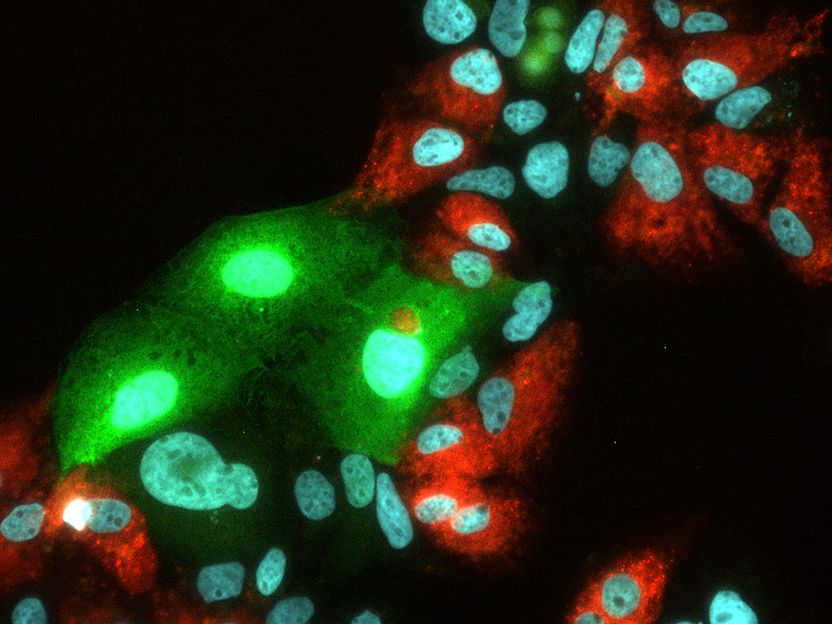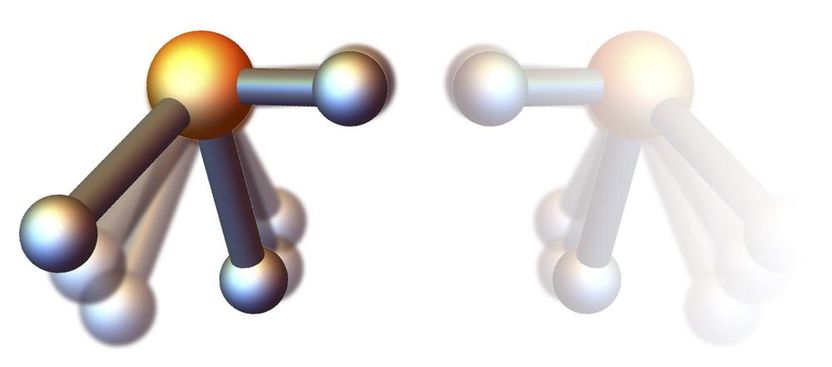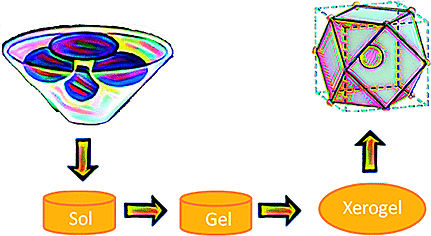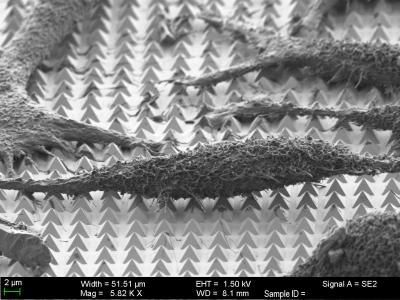Rice physicists kill cancer with 'nanobubbles'
Using lasers and nanoparticles, scientists at rice University have discovered a new technique for singling out individual diseased cells and destroying them with tiny explosions. The scientists used lasers to make "nanobubbles" by zapping gold nanoparticles inside cells. In tests on cancer cells, they found they could tune the lasers to create either small, bright bubbles that were visible but harmless or large bubbles that burst the cells. The research is published in the journal nanotechnology .
"Single-cell targeting is one of the most touted advantages of nanomedicine, and our approach delivers on that promise with a localized effect inside an individual cell," said Rice physicist Dmitri Lapotko, the lead researcher on the project. "The idea is to spot and treat unhealthy cells early, before a disease progresses to the point of making people extremely ill."
Nanobubbles are created when gold nanoparticles are struck by short laser pulses. The short-lived bubbles are very bright and can be made smaller or larger by varying the power of the laser. Because they are visible under a microscope, nanobubbles can be used to either diagnose sick cells or to track the explosions that are destroying them.
In laboratory studies published last year, Lapotko and colleagues at the Laboratory for Laser Cytotechnologies at the A.V. Lykov Heat and Mass Transfer Institute in Minsk, Belarus, applied nanobubbles to arterial plaque. They found that they could blast right through the deposits that block arteries.
In the current study, Lapotko and Rice colleague Jason Hafner, associate professor of physics and astronomy and of chemistry, tested the approach on leukemia cells and cells from head and neck cancers. They attached antibodies to the nanoparticles so they would target only the cancer cells, and they found the technique was effective at locating and killing the cancer cells.
Lapotko said the nanobubble technology could be used for "theranostics," a single process that combines diagnosis and therapy. In addition, because the cell-bursting nanobubbles also show up on microscopes in real time, Lapotko said the technique can be use for post-therapeutic assessment, or what physicians often refer to as "guidance."
Hafner said, "The mechanical and optical properties of the bubbles offer unique advantages in localizing the biomedical applications to the individual cell level, or perhaps even to work within cells."
Most read news
Topics
Organizations
Other news from the department science
These products might interest you

Eclipse by Wyatt Technology
FFF-MALS system for separation and characterization of macromolecules and nanoparticles
The latest and most innovative FFF system designed for highest usability, robustness and data quality

DynaPro Plate Reader III by Wyatt Technology
Screening of biopharmaceuticals and proteins with high-throughput dynamic light scattering (DLS)
Efficiently characterize your sample quality and stability from lead discovery to quality control

Get the life science industry in your inbox
By submitting this form you agree that LUMITOS AG will send you the newsletter(s) selected above by email. Your data will not be passed on to third parties. Your data will be stored and processed in accordance with our data protection regulations. LUMITOS may contact you by email for the purpose of advertising or market and opinion surveys. You can revoke your consent at any time without giving reasons to LUMITOS AG, Ernst-Augustin-Str. 2, 12489 Berlin, Germany or by e-mail at revoke@lumitos.com with effect for the future. In addition, each email contains a link to unsubscribe from the corresponding newsletter.
Most read news
More news from our other portals
See the theme worlds for related content
Topic world Antibodies
Antibodies are specialized molecules of our immune system that can specifically recognize and neutralize pathogens or foreign substances. Antibody research in biotech and pharma has recognized this natural defense potential and is working intensively to make it therapeutically useful. From monoclonal antibodies used against cancer or autoimmune diseases to antibody-drug conjugates that specifically transport drugs to disease cells - the possibilities are enormous

Topic world Antibodies
Antibodies are specialized molecules of our immune system that can specifically recognize and neutralize pathogens or foreign substances. Antibody research in biotech and pharma has recognized this natural defense potential and is working intensively to make it therapeutically useful. From monoclonal antibodies used against cancer or autoimmune diseases to antibody-drug conjugates that specifically transport drugs to disease cells - the possibilities are enormous
Last viewed contents
Translational_medicine
Algeta demonstrates targeted cancer-killing potential of novel alpha particle linked antibodies - Preclinical studies show 227Th-rituximab more effective at killing CD20-positive lymphoma cells than 90Y-tiuxetan-ibritumomab (Zevalin)
Combating cancer's double whammy - New research to fight life-threatening blood clots in cancer patients

What determines whether breast cancer cells can form metastases? - Reprogrammed clones metastasize less
Livatag follow up demonstrates significant survival increase in advanced hepatocellular carcinoma patients

Giant snails as pets can be dangerous - They are both scary and fascinating at the same time. Giant snails are becoming increasingly popular as pets. Now researchers are warning

I was here first! This is how hepatitis C inhibits hepatitis E - A single protein from one virus can prevent infection with another virus in cell culture
ORYX Presents Positive Phase I/IIa Data with Therapeutic Vaccine MicOryx

A new path through the looking-glass - Innovative experimental scheme can create mirror molecules
MIT biologists find that restoring the gene for cancer protein p53 slows spread of advanced tumors
Domainex to Invest in its Drug Discovery Services and Internal Oncology Pipeline in 2011






















































